
ACPN 2024
Connect with APA for ALL Catalog Solutions
May 5 - 8, 2024, Hyatt Regency, Chicago.
Data mapping
Accelerate Your Automotive Success with precise Data Mapping
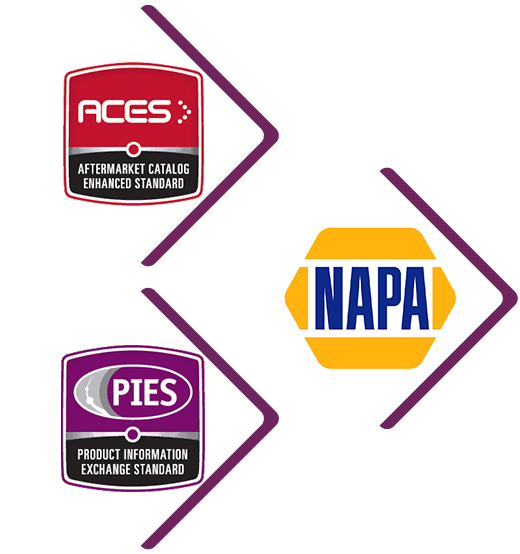
Six Ways ACES, PIES, and NAPA data mapping Positively
impacts automotive businesses
- Mapping ensures that standard and accurate data is exchanged between different systems or platforms, enhancing compatibility and collaboration among manufacturers, suppliers, retailers, and stakeholders.
- Before considering a purchase, customers can access detailed information about a product, including its features, compatibility, and price. This knowledge allows them to make an informed decision, leading to a better overall experience and ultimately boosting product sales while reducing returns.
- Decrease the time to market and sell new products.
- Mapping helps to increase efficiency. It can reduce the need for manual data entry and save time by efficiently resolving conflicting information.
- Standardized data mapping facilitates seamless platform integration, improving operational efficiency and reducing challenges with complex automotive data.
- Data mapping allows for better inventory management, reducing the risk of overstocking. This improves overall costs and enhances supply chain efficiency.
APAs Mapping Services for the Dynamic
Automotive Industry
ACES Mapping
ACES is a data standard the Auto Care Association (formerly the Automotive Aftermarket Industry Association, AAIA) developed to manage and exchange automotive application data, vehicle, and product fitment data through an XML format. ACES contains standardized information like vehicle and equipment attributes, qualifier statements (additional information to describe a particular product attribute), product classifications, brands, etc.
ACES XML files are generated through relational databases like VCdb (Vehicle Configuration database), Qdb (Qualifier), PCdb (Product classification),and Brand (Product brand), including information on the best practices for the automotive industry. ACES mapping lets users easily identify products or components compatible with specific vehicles. Improving mapping accuracy can increase sales and decrease returns caused by incorrect fitment. This standard is widely used for communication and data exchange for Light, Medium, Heavy duty, and offroad vehicles.
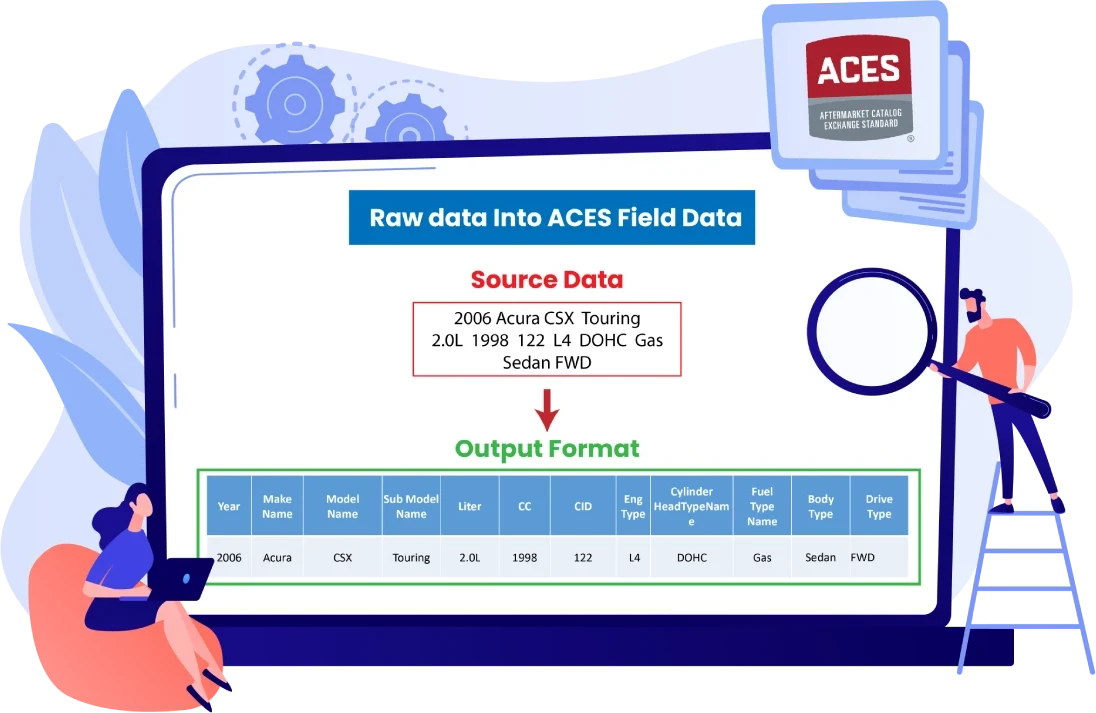
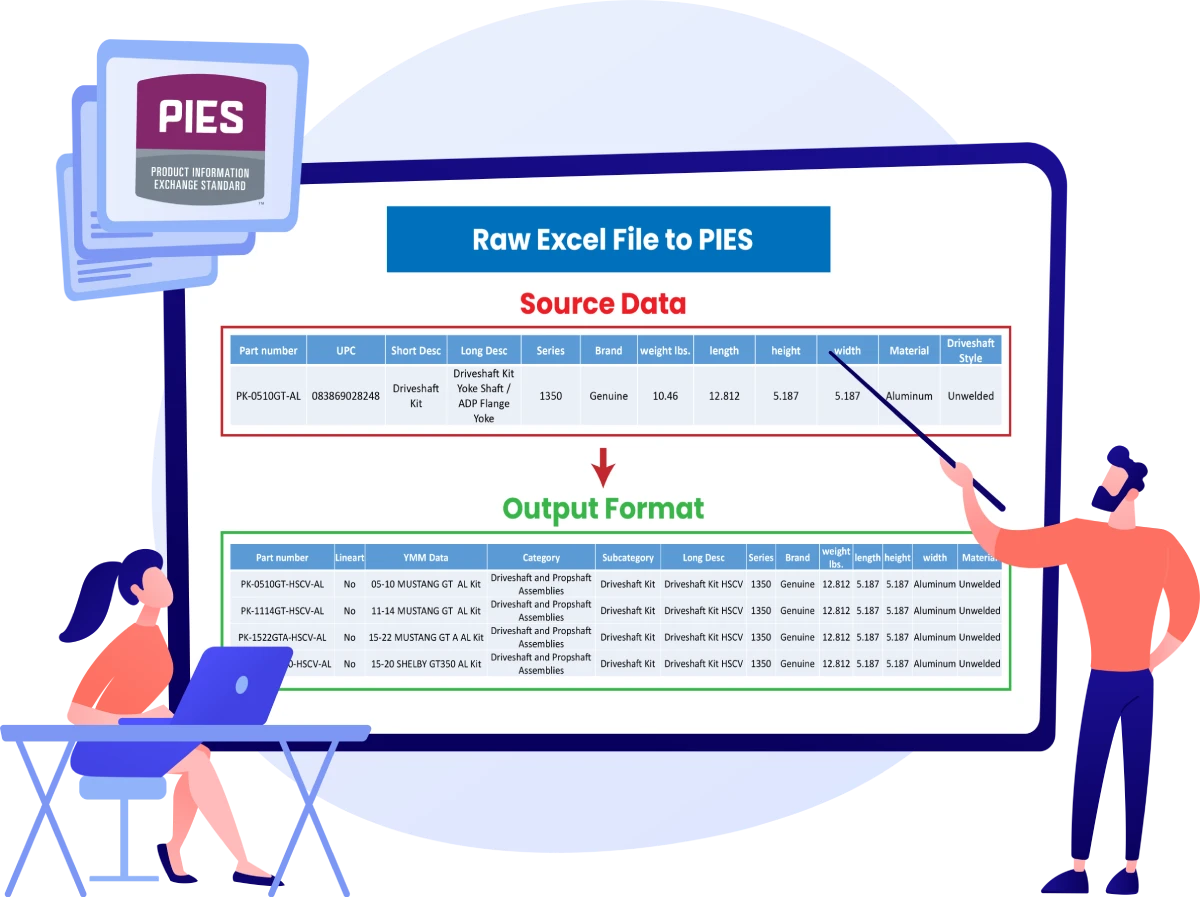
PIES Mapping
PIES (Product Information Exchange Standard) is a data standard developed by the Auto Care Association to manage and exchange product information through an XML format. PIES contain standardized attributes, parts classifications, brands, and other product data
PIES files are generated through relational databases like PCdb (Product classification), PAdb (Product attributes), and Brand (Product brand), including information on the best practices for the automotive industry. PIES can also include product features and benefits information, descriptions, warranty, specifications, hazardous information, product kit and product images, videos, etc., making it essential for Product Cataloguing.This standard is widely used for communication and data exchange for Light, Medium, Heavy duty, and offroad vehicles.
NAPA Mapping
NAPA (National Automotive Parts Association) is a high-quality auto parts and products distributor in the United States and Canada. By mapping product data to NAPA's database and taxonomy, manufacturers, suppliers, and other stakeholders in the automotive industry can ensure that their products are accurately listed and categorized in NAPA's systems. This facilitates more efficient data exchange, makes products easily accessible to NAPA's customers, and improves overall inventory management and customer experience.
The NAPA network (America’s largest network of automotive parts and products) depends heavily on NAPA mapping for the efficient distribution and retailing of automotive parts and accessories. Manufacturers and suppliers can expand their reach and use NAPA's brand recognition and extensive distribution network by linking their products to NAPA’s catalog. This enables them to tap into a broader customer base effectively Converting your ACES data to NAPA formatoffers numerous benefits.
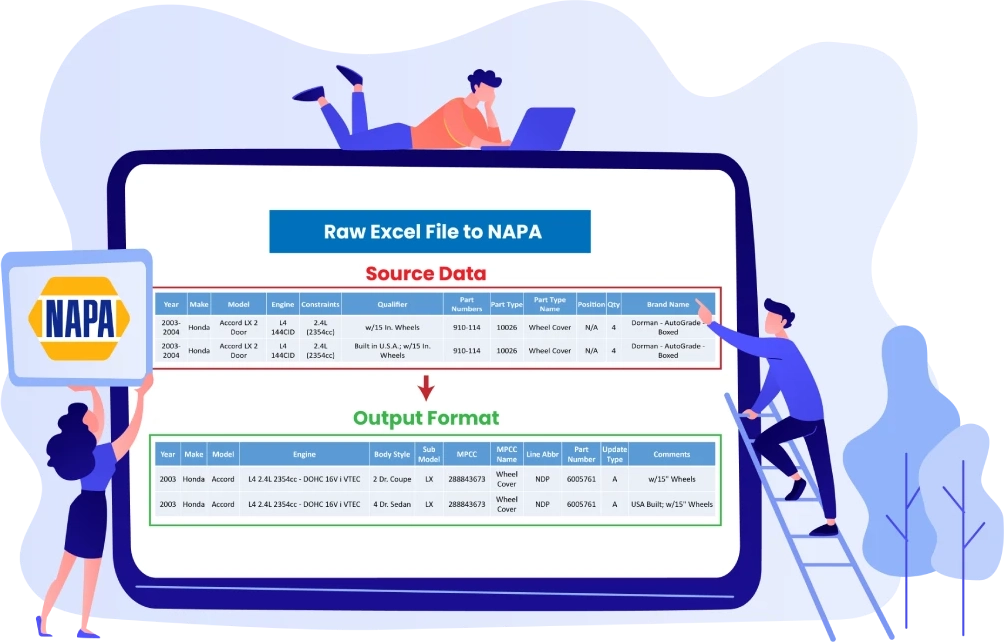
Database
Data Analysis through codification
Why APA?
We specialize in data mapping for ACES, PIES, and NAPA standards and their relational databases with over 20+ years of experience in the automotive aftermarket and heavy duty industry.

If you can relate to any of the following issues, you're in the
right place:

Your business uses a traditional catalog, whether in print, PDF, or e-zine format, requiring conversion of product data into digital format.

Your suppliers and distributors request machine-readable XML formats for your products or parts to improve data exchange.
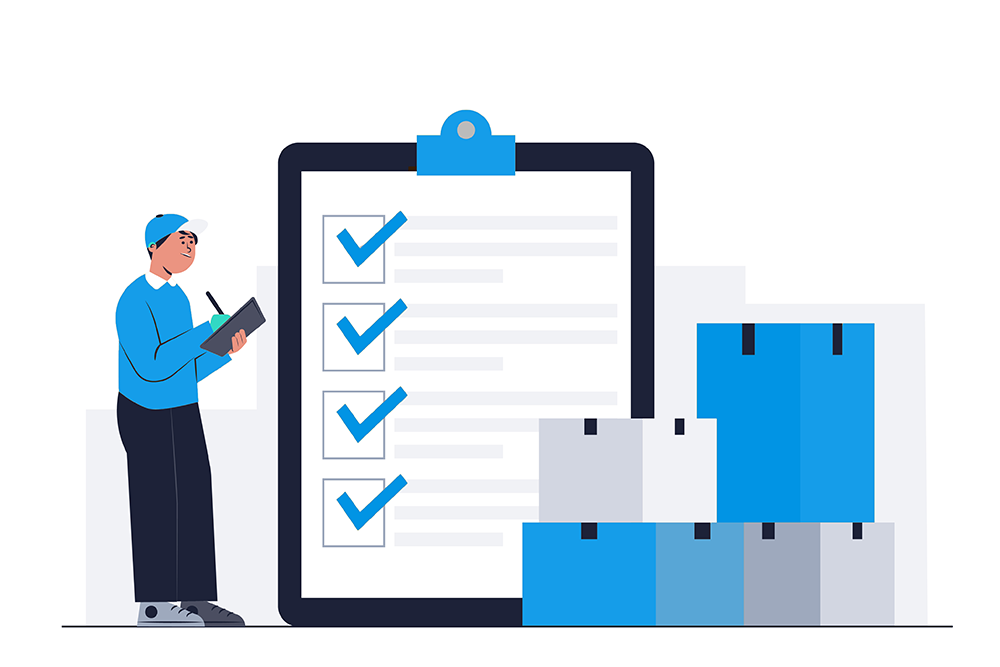
Manage vast volumes of parts or product data effectively.
APAs Services
for ACES, PIES, NAPA Mapping
Detailed mapping compliance with the latest standards:

ACES 3.0 to 4.2

PIES 6.5 to 7.2
- Generate ACES / PIES / NAPA holes reports identifying gaps in the product and application.
- Generate ACES / PIES / NAPA invalid reports identifying potential red flags and errors.


APAs Software
for ACES, PIES, NAPA Mapping
Managing hundreds and thousands of ACES PIES XML files and manually processing them can be tedious and error-prone. At APA, we offer a suite of tools to simplify your life and boost productivity for cataloging.
- PMT: Central repository for part information management, compliance with ACES / PIES, E-Cataloging, and E-Distribution of automotive parts data through various channels.
- ACES Viewer & Validator: View ACES .xml files in a tabular form and analyze invalids/errors.
- ACES & PIES Flatteners: Bulk convert .xml files into flat files (Eg .csv)
- RECORD: Simplifies cataloging by converting supplier data into a compact Net Change file, swiftly validating for errors, and ensuring error-free publication.
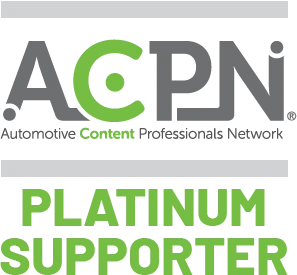




.webp)
.webp)
.webp)
.webp)




